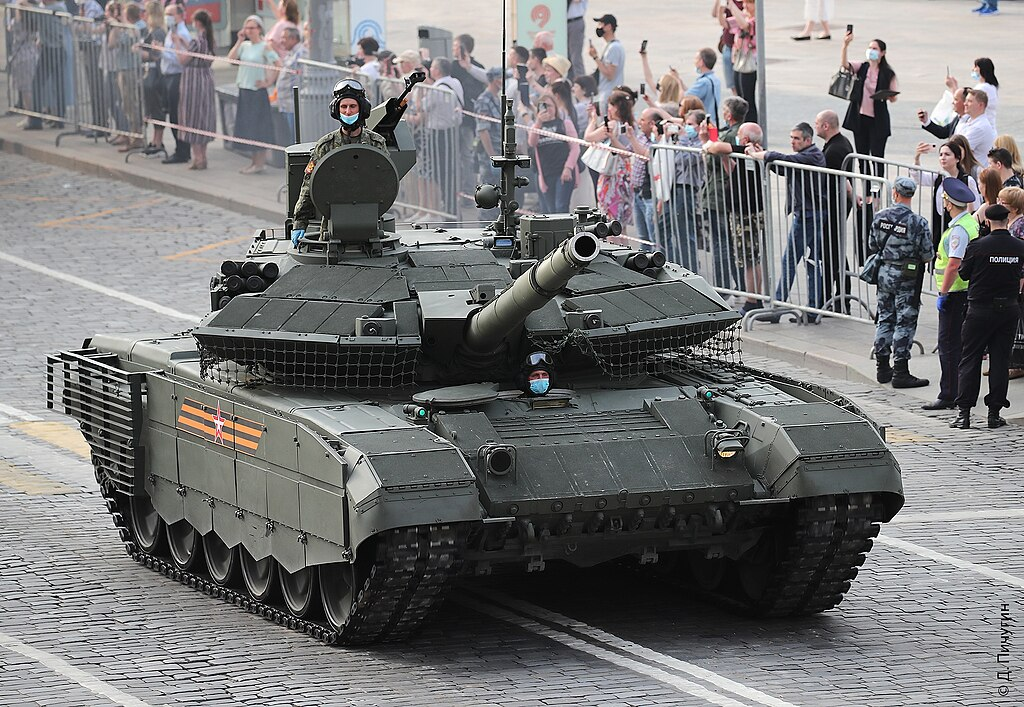
In the era of contemporary armored warfare, few rivals generate as much hot air as the one between Russia’s T-90 and America’s M1 Abrams. They are more than tanks—rolling emblems of two distinct military philosophies. And whereas the spec sheets read so wonderfully, actual combat has shown that stats and amenities don’t always determine who wins.

The Russian strategy, in the T-90, is centered on efficiency, mobility, and mass deployability. Derived from the T-72, the T-90 is equipped with a 125mm smoothbore cannon, has a three-man crew due to the use of an autoloader, and is fitted with systems such as the Shtora-1 to disorient incoming missiles.

Its Kontakt-5 explosive reactive armor can blunt older-generation anti-tank weapons, but it fares poorly against newer-generation high-penetration missiles. With its lighter construction and low profile, the T-90 is more difficult to detect and can traverse ground that may be difficult for heavier tanks. The trade-off? Those same design factors sacrifice some protection and survivability.

Western main battle tanks go in an entirely different direction. The M1 Abrams—and its European counterpart, the Leopard 2—prioritize survivability and firepower above all else. The Abrams boasts state-of-the-art composite armor incorporating depleted uranium plates, a 120mm smoothbore cannon, and top-grade fire control systems to deliver pinpoint accuracy even in adverse conditions.

A gas turbine engine gives it speed and agility, but at the expense of fuel consumption. It has a four-man crew, with a human loader replacing an autoloader, which not only loads the cannon but also ensures extra hands for maintenance and situation awareness.

The largest philosophical division is in crew protection. Abrams and Leopard 2 tanks have their crews preserved even after being hit, with blowout panels and armored ammunition compartments that deflect explosions away from troops. The T-90 retains the Soviet-era tradition of carrying ammunition in a turret-mounted carousel. And if that carousel is struck, it can unleash the dreaded “jack-in-the-box” effect, throwing the turret airborne and leaving the crew with little hope of survival.

On the battlefield, firepower and tech matter just as much. The T-90’s gun can fire guided missiles out to five kilometers, a useful advantage in certain scenarios. But the Abrams’ 120mm gun—paired with modern armor-piercing rounds, thermal sights, and advanced targeting systems—gives it a consistent edge in speed and accuracy during high-intensity engagements.

Tactical history speaks the loudest. In Syria, T-90s made a great initial impression by brushing off older missile attacks, but the Ukraine conflict revealed its weaknesses. Ukrainian troops, employing newer projectiles such as the Javelin and top-attack unmanned aerial vehicles, took advantage of the T-90’s thin turret roof and perilous ammo storage, destroying or capturing several. Improvised “cage” armor provided scant benefit, and the tank’s low reverse speed often eliminated any possibility of retreat from ambushes.

The Abrams, on the other hand, boasts a decades-long combat record—Gulf War, Iraq, Afghanistan. In 1991, it famously reduced Iraqi T-72s to scrap in minutes, demonstrating its firepower and armor advantage. Losses have been few and from mines or IEDs, not enemy tanks. Each war has spurred improvements, from thicker armor to active protection systems capable of shooting down incoming fire.

The issue with Russian armor is not with the T-90 alone. The T-72, which is still in mass deployment, has been extremely vulnerable due to the same reason: poor positioning of ammunition, outdated viewing optics, and thin armor. It is the most manufactured and eliminated modern tank in history.

Armor development continues to improve. Western tanks are now more frequently constructed with modular armor kits and advanced active defenses, while Russia continues to rely upon reactive armor, r—good for countering some threats, but not the latest tandem warheads or top-attack missiles. Russia’s next-generation tank, the T-14 Armata, offers improved protection in the form of an unmanned turret and a more secure crew compartment, but is in small production numbers and has yet to be tested in combat.

Ahead, new designs are already in the making. The U.S. Army’s future M1A3 Abrams will be lighter, more fuel-efficient, and potentially have an autoloader or unmanned turret. Europe’s MGCS program and Britain’s Challenger 3 are similarly looking for advances in armor, sensors, and networking.

One thing is for sure: no tank is unstoppable. The battlefields of the present day are infested with precision-guided missiles, loitering drones, and low-cost but lethal anti-tank missiles. In this type of environment, decisions about design years ago—such as how to carry ammunition or safeguard crews—can determine survival versus ruin. Currently, the T-90’s travails in Ukraine serve as a stern reminder that crew survivability and technological superiority are not niceties in tank warfare—they are the keys to victory and survival in combat.
More related images you may be interested in:




